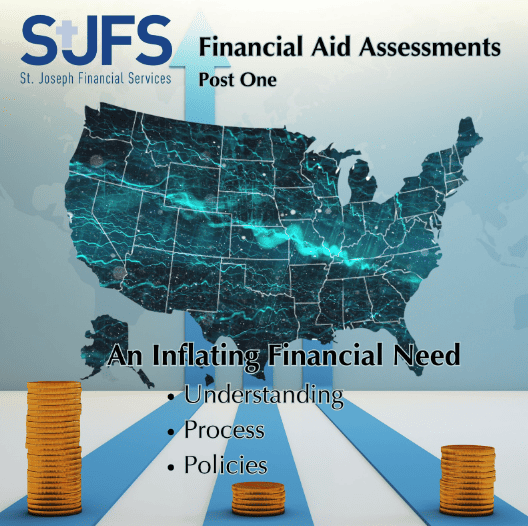Financial Aid Assessments Series
Part 1: Prominent Nationwide Need
By: Jonathan Boulos, CEO
Edited by: Mary Stange, Client Advisor
Prominent Nationwide Need
Financial Aid has become more prominent in Catholic Schools, primarily in bigger cities. Inflation is on the rise and most families are working more than one job to make do. With prices trending upward, most Catholic families are double income, but they still cannot afford tuition, particularly when families have more than one child. Most families are seeing some element of need for financial aid. Thinking about this in terms of need rising in tandem with increasing inflation can help keep rising needs in the foreground.
This need is something we will see more of over time, so it is important to approach needs logically and without bias to protect the reputation of the school and its leader. Bad decisions can create a cycle that a school will need years to reverse, and most often those bad decisions come from a lack of information creating a lack of understanding. Without a proper understanding of the amount of need and the amount available to meet need, leaders tend to use aid as a way of increasing (or stopping the decrease of) enrollment.
This blog series will give a roadmap to better understanding, but our advisors at SJFS spend weeks with leaders on just this topic to create good processes and policies. We seek to create clarity. Clarity comes through understanding and well defined processes and policies. When families don’t have to wonder how tuition aid is assessed and awarded, the retention and loyalty of those families increases. Processes should include safeguards against bias and a buffer for plausible deniability.
In order to fully engage this process, the first two posts in this series will increase your understanding of aid; how to define it and how to cultivate it. The final two posts will help you in defining a process that safeguards your school, its staff and its families.
Recommended Action: Take a look at your trends of financial aid granted over the last 5 years. Has the amount gone up or down? What has enrollment done in the corresponding periods? If you look at the financial aid application data, has the number of families applying increased? What about the overall dollars of need? If you’re not able to answer these questions fairly quickly, there is likely an unmanaged risk that requires your attention. We can help.

